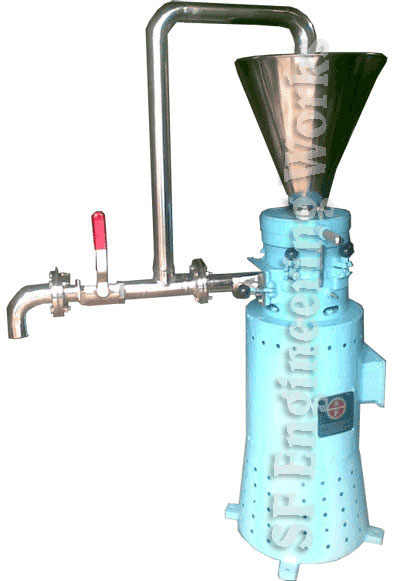|
| |
|
TECHNOLOGY USED IN OUR PLANTS
Most manufacturing plants exist at opposite ends of the technological extreme. At one end, plants are built on minimum investment with the minimum level of technology needed to make them work. Whilst this places the least burden on raising capital, the low efficiency of the plant reduces its profitability in the long run. At the opposite end, major companies build plants of the highest technological calibre, which manufacture efficiently but have a long time-span to the breakeven point; if there is a slump in demand before the breakeven point, the company can be landed with a huge deficit.
Our plants represent a balance between these extremes, bringing their good points without the worst effects of the bad points. We use technology, not for its own sake, but where it has the most benefit on efficiency. These are a few examples where we use technology:- |
| |
An example of where we avoid unnecessary cost:-
We do not normally specify a split-level building, which is frequently used for grease plants. Instead, we build and supply an operator platform that sits behind and along the vessels for loading raw materials and visually inspecting batches. However, if a split-level building already exists, we can incorporate that into the design.
HOW WE SUPPLY OUR PLANTS
With most plant suppliers, the usual process is to build the components in the factory and assemble them on site. However, particularly on major plants, we have a different approach. We offer to skid mount our plant equipment, test it in the
India first, then taking advantage of the skid mounting method, rapidly dismantle, transport and reassemble at the client's facility. We can also provide intellectual property, such as grease formulae and methods, and the supply of raw materials, should it be of benefit to the client.
The first stage is to assess the customer's needs (plant capacity, grades of products to produce, package sizes, etc), the site where the plant is going to be situated, what services are available (electricity, water, fuel, heat, etc) and their specifications (voltage, water pressure, fuel type, etc).
|
| |
|
The next stage is to determine what is to be supplied by us and what is to be provided by the client. The usual arrangement is that we supply the process plant and packaging equipment, whilst the client provides the building, services, warehousing and raw material storage. We can, of course, provide variations from this, for example, we can provide external base oil storage tanks and manifolding, if these are difficult to source in the locality.
At this point, we are ready to provide the plant proposal, which will contain a final price, delivery schedule, payment staging, listing of what both parties have agreed to provide, etc.
Upon acceptance of the proposal and receipt of the down payment, we fabricate, assemble and test the plant in the INDIA, then invite the client over to inspect prior to dismantling for shipment. If client training is required, this is the stage at which it is done.
The plant is then dismantled, not fully, but into skid mounted modules that are easy to move but minimise the amount of reassembly at the destination site.
Upon arrival on site, the skids are moved into position, the pipework and electrical wiring reconnected, non-skid metalwork such as the operator platform reassembled and services connected to the plant.
The skid-based modules excel at this point as it means that the plant can go from being an empty building to being recognisable within one day and fully operational within 1-2 weeks. |
| |
Once the plant is able to run, the first batches of grease are made, operator training is carried out, if required by the client and then the plant is officially handed over to the new owners.
This does not mark the end of our involvement with the plant as we continue to offer support in terms of spares supply, maintenance work, training and manufacturing know-how. |
| |
|
|
|


